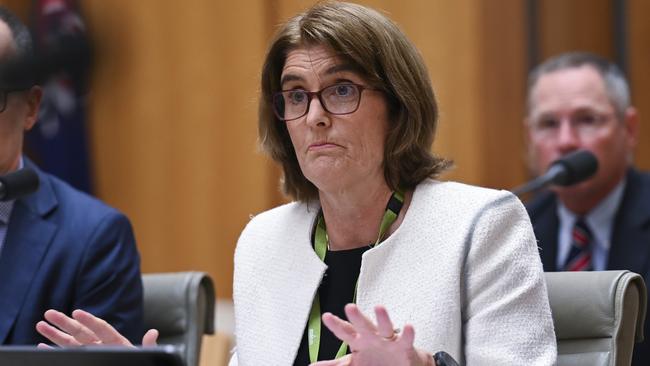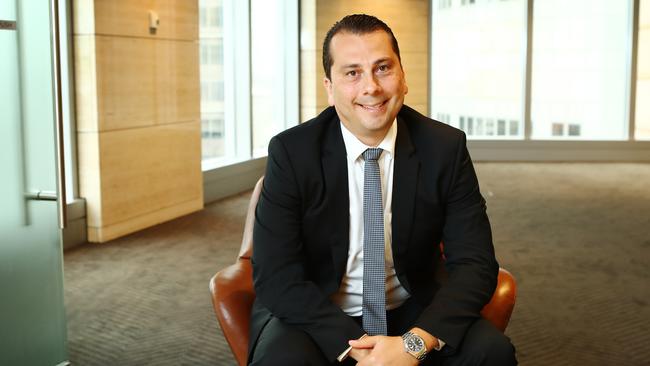Bullock remarks suggest a path towards rate cuts this year
Amid lingering RBA hawkishness has emerged an achievable road map for interest rate cuts to begin in August.

Amid lingering hawkishness from the Reserve Bank this week, an achievable road map has emerged for interest rate cuts to get under way in August – but a number of things have to go right.
Like the US Federal Reserve, the RBA’s February policy decision statement this week said the board “needs to be confident that inflation is moving sustainably towards the target range”.
After lower than expected inflation data last week, RBA guidance was hawkish relative to market expectations, as it said “a further increase in interest rates cannot be ruled out”.
Of course there’s no need for the current RBA board to take the kind of risk that former governor Philip Lowe took during the pandemic, when he said rates were unlikely to rise until 2024.
Ultimately Lowe couldn’t keep that commitment because inflation took off amid unprecedented stimulus and supply chain disruption, and the pandemic wasn’t as bad as expected.
Given the potential strife the economy faced at the time, it was a risk worth taking.
But with inflation still well above target levels, the unemployment rate near 50-year lows, consumption running above its pre-Covid trend, consumers still having unusually large savings buffers and tax cuts on the way, the RBA doesn’t want to encourage excessive risk-taking now.
Still, while Michele Bullock stressed that the RBA’s “technical assumption” – that the official cash rate will fall from the current 4.35 per cent level around mid-year to 3.2 per cent by mid-2026 – was just that, the cash rate path, together with some reasonable assumptions for the exchange rate, oil prices and population growth, does get the core inflation rate forecast back to 2.5 per cent.
If core inflation does continue to fall and nominal interest rates aren’t cut, there could be a significant tightening of real or inflation-adjusted interest rates, which would worsen the current slowdown.
Whether mid-2026 actually constitutes a “reasonable time frame” for getting inflation back to target with only a “gradual easing in labour market conditions to levels consistent with full employment” depends on what happens to inflation expectations and can’t be known for sure at this stage.
Cynics will say the RBA was compelled to predict that inflation will get back to its target band by the end of its forecast horizon or it would have no choice but to lift interest rates again this week.
Interestingly, in New Zealand, ANZ predicted two more rate hikes in February and March.
But governor Bullock said the RBA board was “comfortable that inflation expectations are not drifting up, certainly in the medium term”.
“If our forecasts come true, we will have been outside the band for four years … and we think that if it stays outside that much longer that it just increases the risks that inflation expectations rise. But at the moment, I think we’re comfortable that they’re well-grounded at the midpoint of the target.
“We are trying to bring inflation back to target without slowing the economy more than necessary on the one hand or risking high inflation for longer on the other hand,” she told federal parliament’s economics committee.

UBS chief economist George Tharenou said the RBA governor’s testimony was even more hawkish than her press conference after the February meeting.
Indeed, she only discussed interest rate hikes, saying ‘‘the board hasn’t ruled out a further increase in interest rates but neither has it ruled it in’’.
Bullock also implied unemployment needed to rise, observing that ‘‘labour market conditions are easing, although they remain tighter than we think is consistent with low and stable inflation”.
Meanwhile, deputy governor Chris Kent said the market reaction to the February meeting – which initially removed 25 basis points of cuts this year, and delayed the first full easing to November – “was consistent with what the board wanted”.
But while refusing to be drawn on whether the RBA board discussed the case for easing, Ms Bullock indirectly supported market expectations of interest rate cuts in the second half of the year.
She said two more quarters of lower CPI data would give the central bank “confidence” about inflation. “Placing your faith on one quarterly number … you know if we got another couple of quarters, that would be great,” Ms Bullock said.
“And that would give us much more confidence that we’re heading where we need to go.
“But just (looking at) one quarterly number, and annualising it … of course if you’d done that for the previous quarter, you would have said … ‘wow, we’re way behind the eight ball’ … so there’s danger in just taking one number and annualising it and basing it (monetary policy) on that.”
The RBA will have seen another two quarters of CPI data by the end of July. That makes the August 5-6 meeting – which will have updated forecasts in the statement on monetary policy – the first real chance of a rate cut.
Unsurprisingly, overnight index swaps were pricing an August rate cut as a near certainty and two official interest rate cuts of 25 basis points each were almost fully priced-in by year’s end.
Ms Bullock did warn that interest rates might need to be higher than otherwise if the nation’s terrible post-pandemic productivity performance doesn’t improve.
“If productivity doesn’t rise, then what’s going to happen is that the rate of increase in wages is going to have to slow as well,” she said.
“It just means that we have to make sure that we bring demand back down so that businesses, when they’re facing these cost increases, they’re thinking twice about whether or not (they) can pass these cost increases on.”
The central bank didn’t technically “forecast” productivity, but believed the recent weakness was a “by product” of the health crisis and a number of extreme weather events, Marion Kohler, the acting head of the RBA’s economics department, said.
The hiring spree in the wake of the lockdowns explained some of the historical plunge in productivity, she said, as inexperienced workers started new jobs. “So we don’t think the assumption we have is unreasonable, because we think there’s these temporary factors,” she said.




To join the conversation, please log in. Don't have an account? Register
Join the conversation, you are commenting as Logout